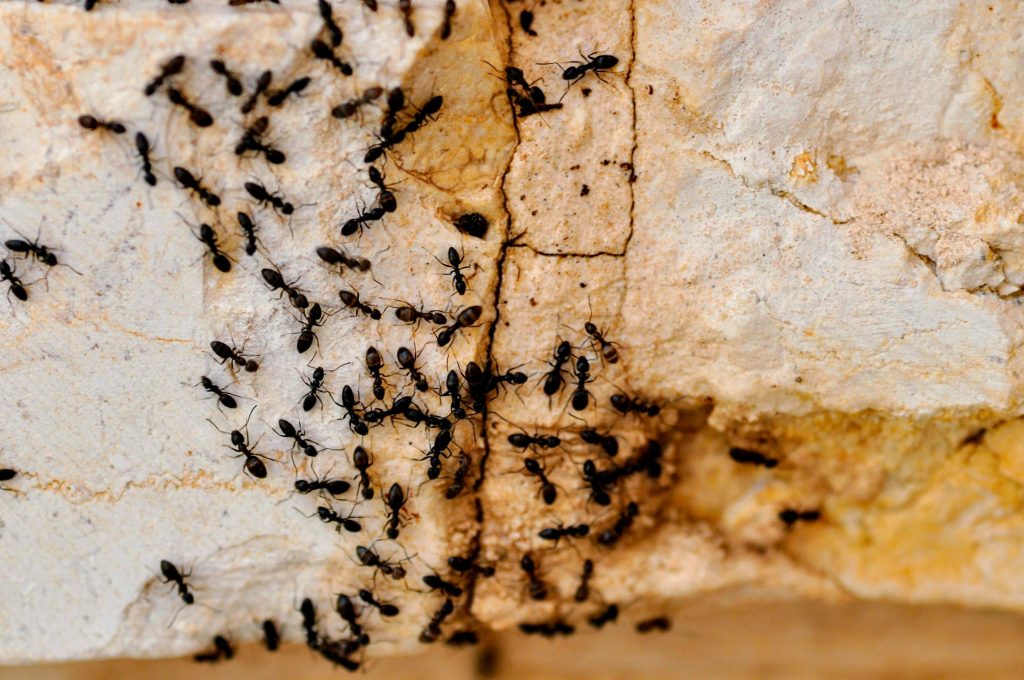Señales de que Tienes una Infestación Oculta (y Cómo los Profesionales la Detectan)

Introducción
¿Estás compartiendo tu hogar sin saberlo con huéspedes no deseados? Descubre las sutiles señales de una infestación oculta que podría estar acechando justo bajo tu nariz. La detección temprana es crucial en el control de plagas, ya que puede salvarte de daños extensos y reparaciones costosas. Los profesionales juegan un papel vital en la identificación y el tratamiento de infestaciones, asegurando que tu hogar siga siendo un refugio seguro.
Señales Comunes de una Infestación Oculta
1.1 Excrementos
Los excrementos son una de las señales más reveladoras de un problema de plagas. Diferentes plagas dejan excrementos distintos:
-
Roedores: Los excrementos de ratón son pequeños, de aproximadamente 1/8 a 1/4 de pulgada de largo, y tienen forma de grano de arroz. Los excrementos de ratas son más grandes, de aproximadamente 1/2 pulgada de largo, y tienen forma de cápsula.
-
Cucarachas: Sus excrementos se asemejan a pimienta negra o posos de café, pequeños y cilíndricos.
-
Termitas: Conocidos como frass, sus excrementos parecen pequeñas pelotas de madera.
Reconocer estos excrementos es esencial para identificar el tipo de plaga y tomar las medidas adecuadas.
1.2 Marcas de Roído
Las marcas de roído pueden indicar actividad de roedores, ya que muerden diversos materiales para mantener sus dientes y crear nidos. Los materiales comúnmente afectados incluyen:
-
Madera: Marcas limpias de corte dejadas por roedores.
-
Plástico y Cables: A menudo roídos por ratas y ratones.
-
Embalaje de Alimentos: Las señales de roído pueden indicar una fuente de alimento.
Busca estas marcas en áreas ocultas como áticos, sótanos y detrás de electrodomésticos.
1.3 Rutas de Grasa
Las rutas de grasa son manchas oscuras dejadas por roedores mientras viajan por sus caminos establecidos. Estas rutas a menudo se pueden encontrar en áreas de alto tráfico, como:
-
Cocinas: Cerca de fuentes de alimento y botes de basura.
-
Sótanos: A lo largo de paredes y esquinas.
Identificar las rutas de grasa es crucial, ya que indican movimiento activo de roedores y la necesidad de una evaluación profesional.
1.4 Madera Hueca
Las plagas que perforan la madera crean espacios huecos en la madera, lo que puede llevar a daños estructurales significativos. Las señales a buscar incluyen:
-
Puntos Blandos: Áreas que se sienten esponjosas o desmoronadas.
-
Huecos de Salida: Pequeños agujeros en superficies de madera donde han emergido las plagas.
Abordar la madera hueca de inmediato es esencial para prevenir daños adicionales a tu hogar.
1.5 Olores Extraños
Diferentes plagas emiten olores distintos que pueden señalar una infestación mayor:
-
Roedores: Un olor almizclado, similar al amoníaco.
-
Cucarachas: Un aroma a moho o aceitoso.
-
Termitas: Un olor húmedo y a moho.
Confía en tus sentidos; si notas olores inusuales, puede ser el momento de buscar ayuda profesional.
Métodos de Detección Profesional
2.1 Imágenes Térmicas
La tecnología de imágenes térmicas detecta variaciones de temperatura en los materiales de construcción, ayudando a los profesionales a identificar infestaciones ocultas. Este método no invasivo es particularmente efectivo para localizar plagas en paredes y techos, donde los métodos tradicionales pueden fallar.
2.2 Herramientas de Monitoreo
Los profesionales del control de plagas utilizan diversas herramientas de monitoreo para detectar y prevenir infestaciones:
-
Trampas Adhesivas: Capturan insectos y ayudan a monitorear poblaciones de plagas.
-
Trampas de Feromonas: Atraen plagas específicas, proporcionando información sobre su actividad.
-
Sistemas de Monitoreo Electrónico: Ofrecen datos en tiempo real sobre los movimientos de las plagas.
Estas herramientas son esenciales para la detección temprana y el monitoreo continuo.
2.3 Inspecciones Visuales
Las inspecciones visuales exhaustivas son críticas en la detección de plagas. Los profesionales se centran en áreas clave como:
-
Áticos y Sótanos: Lugares comunes de escondite para plagas.
-
Puntos de Entrada: Grietas y huecos por donde pueden entrar las plagas.
-
Señales de Daño: Excrementos, nidos y daños estructurales.
Los profesionales están capacitados para identificar señales que los propietarios podrían pasar por alto, asegurando una evaluación completa.
Por Qué Importa la Detección Temprana
Retrasar el control de plagas puede llevar a consecuencias severas:
-
Daños Estructurales: Plagas como las termitas pueden causar daños significativos a la estructura de tu hogar.
-
Implicaciones Financieras: El costo de las reparaciones y el control de plagas aumenta con el tiempo.
-
Riesgos para la Salud: Las plagas pueden portar enfermedades, representando riesgos para la salud de los residentes.
La detección temprana permite una intervención oportuna, minimizando daños y asegurando un entorno de vida seguro.
Conclusión
Reconocer las señales de una infestación oculta es el primer paso para recuperar tu hogar. Confía en los profesionales para ayudarte a identificar y eliminar a estos huéspedes no deseados. Si sospechas de una infestación, no dudes en programar una inspección profesional. La gestión proactiva de plagas es esencial para mantener un hogar seguro y saludable.

